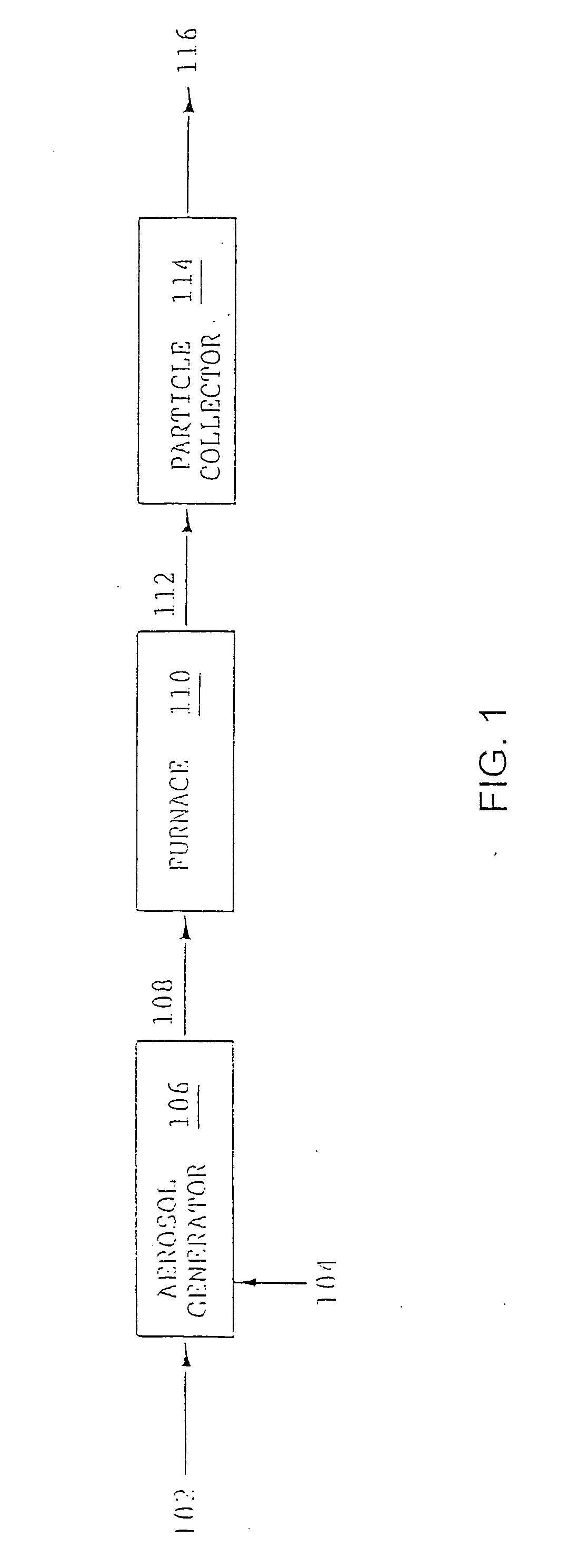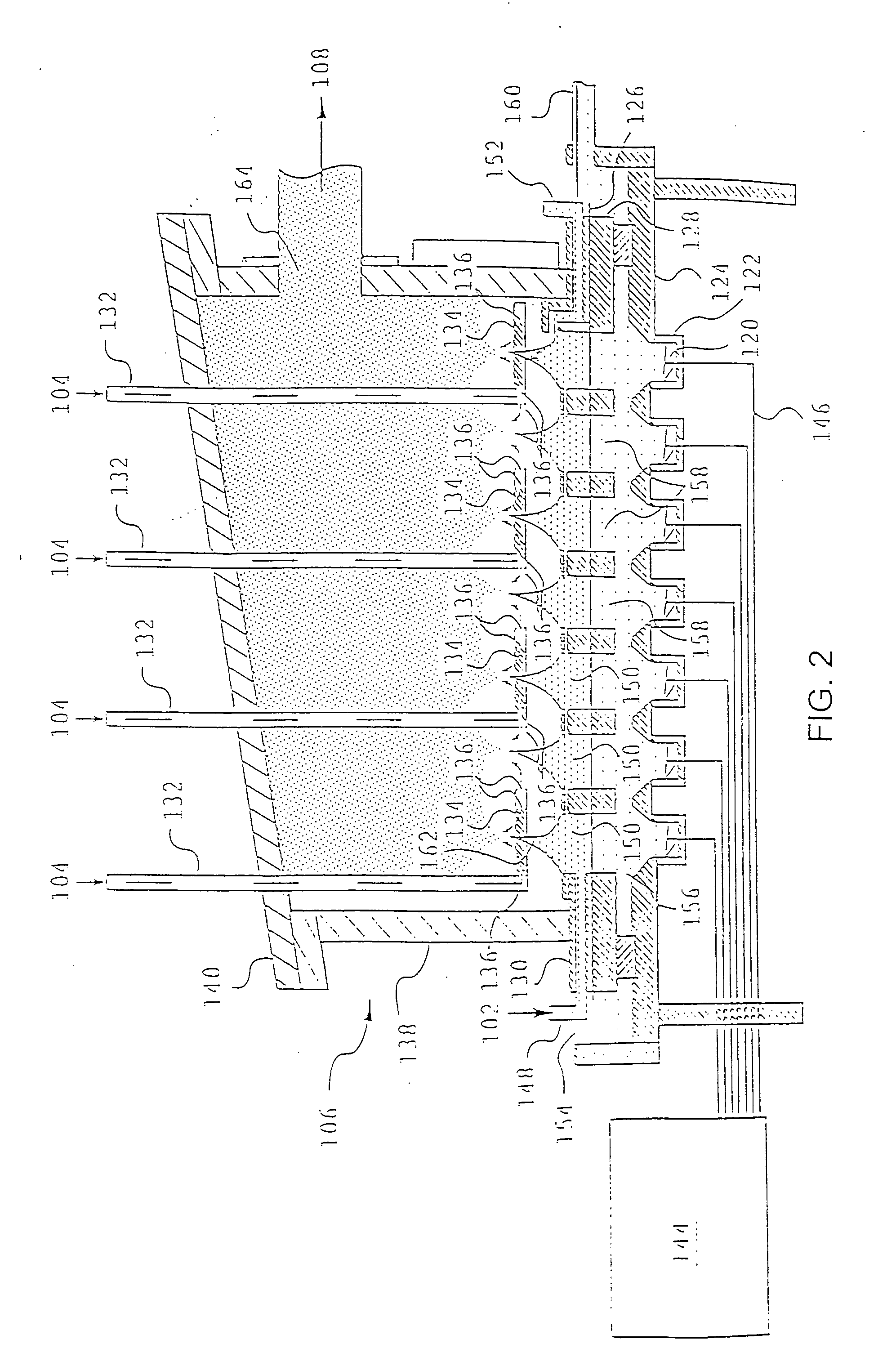Aerosol method and apparatus, particulate products, and electronic devices made therefrom
a technology of particulate products and electrosols, applied in the field of electrosol methods and equipment, particulate products, and electronic devices made therefrom, can solve the problems of inability to reduce the amount of precious metals, cell cost, cell performance and operating life, and the need for superior electrocatalyst materials
- Summary
- Abstract
- Description
- Claims
- Application Information
AI Technical Summary
Problems solved by technology
Method used
Image
Examples
example 1
0.47 gram of silver nitrate was dissolved in 20 milliliters of distilled water, followed by the addition of 20 milliliters of a suspension including 20 weight percent of nano-size carbon black particles in water (Cab-O-Jet 200 from Cabot Corporation) to yield a silver / carbon ratio of about 9 / 91. The resulting mixture was converted to an aerosol by ultrasonic generation at 1.6 MHZ using nitrogen as a carrier gas. The aerosol was processed in a furnace at a temperature of about 500° C. A black powder including silver / carbon black composite particles with an average size of 2 to 3 μm was obtained. Furthermore, the particles include significant porosity, which is preferred for use in an electrochemical cell.
example 2
Colloidal carbon (Cab-O-Jet 200, Cabot Corporation) was added to distilled water followed by the slow addition and dissolution of silver nitrate (AgNO3) to form a liquid having an Ag:C weight ratio of 9:91 and a total weight percentage of precursor in solution of about 5 weight percent. The solution was nebulized using ultrasonic transducers and processed in a tubular furnace at 700° C. with nitrogen as a carrier gas. Nitrogen was also used as a quench gas.
This powder is illustrated in the SEM photomicrograph of FIG. 39. The bright spots on the surface are silver metal. The particles are spherical and the tap density of the powder was 2.26 g / cm3. The powder has a surface area of about 100 m2 / g, indicating significant porosity which is advantageous for use in electrochemical cells. X-ray diffraction indicated phase-pure silver metal and amorphous carbon. A TEM image of a particle of the powder is illustrated in FIG. 40. The particle is comprises a porous carbon support having smal...
example 3
Colloidal carbon (Cabo-O-Jet 200, Cabot Corporation) was added to distilled water followed by the slow addition and dissolution of silver nitrate to form a liquid with an Ag:C weight ratio of 95:5. The total weight percentage of precursor in solution was 10 weight percent. The solution was nebulized and processed in tubular furnace at 850° C. using nitrogen as a carrier gas and nitrogen as a quench gas. The powder had a tap density of 10.5 g / cm3.
PUM
| Property | Measurement | Unit |
|---|---|---|
| Size | aaaaa | aaaaa |
| Size | aaaaa | aaaaa |
| Reaction temperature | aaaaa | aaaaa |
Abstract
Description
Claims
Application Information
 Login to View More
Login to View More - R&D
- Intellectual Property
- Life Sciences
- Materials
- Tech Scout
- Unparalleled Data Quality
- Higher Quality Content
- 60% Fewer Hallucinations
Browse by: Latest US Patents, China's latest patents, Technical Efficacy Thesaurus, Application Domain, Technology Topic, Popular Technical Reports.
© 2025 PatSnap. All rights reserved.Legal|Privacy policy|Modern Slavery Act Transparency Statement|Sitemap|About US| Contact US: help@patsnap.com



